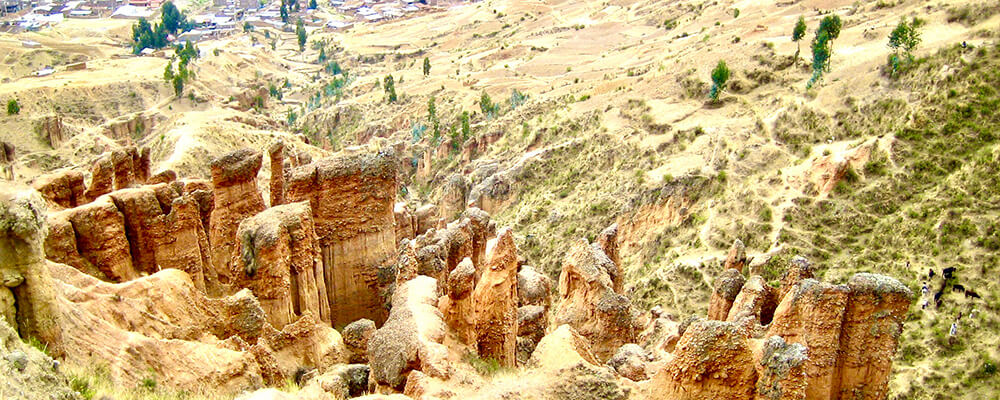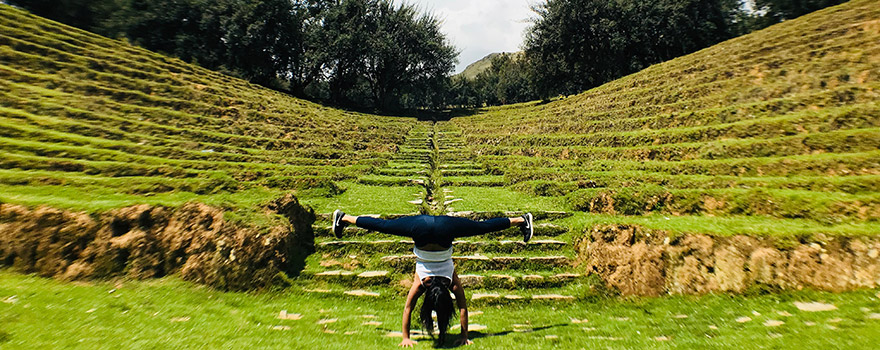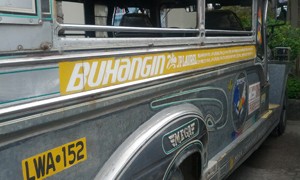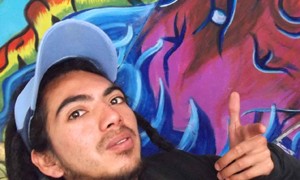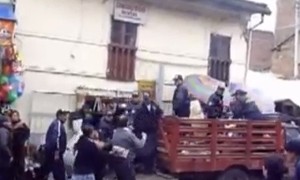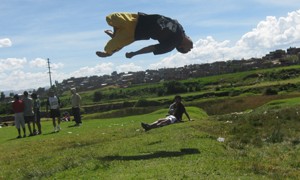I’ve been living in Peru, specifically in Huancayo in the Central Andes of Peru, for over 10 years now, and I always tell my friends that it’s so worth visiting here if you want a taste of the real Peru that you wouldn’t get in Cusco because Huancayo is still relatively untouched by international tourism. These are the places I’d recommend seeing to get a feel for what it’s traditionally like living in Peru and in the Andes mountains.



This past year has been a journey of connection for me – just as every cell in the body is separate and simultaneously part of a whole, so too are we as human beings individuals that are intimately interconnected. It’s what I come back to when I feel lost, and I believe it’s what underlies healing: the realization that everything we do (eat, breathe, say, etc.) and experience affects the whole, then harnessing this knowledge for growth in any area.
“There is a story within every illness and something to be learned from listening to it…Much of our pain is rooted in our deafness to spirit. We remain in an ongoing struggle to break free from the illusions of who we think we’re supposed to be so that we may live the life we are called to live and become the person we were born to be.” – Life Is Your Best Medicine, Dr. Tieraona Low Dog
It’s been 6 years, maybe 7, since I’ve been to the Philippines. The last time I arrived in Davao City, we used a staircase to exit the aircraft, suffocating in the dust and heat as we walked ourselves to the terminal, which was really just a simple box-like building. I would never have guessed that this time, I would walk into a renovated airport through the jet bridge that I’m used to and into maze-like hallways pristine in white that I associate with larger airports to ease our transition to a new world.
The world seems so much simpler when we consider the good vibes and bad vibes in our lives. That’s how Alan Espinoza explained Rastafarianism to me. The Rastafari movement started in Peru around 20-25 years ago, arriving in Lima and spreading even to the Central Andes here in Huancayo. There are now around 30 Rastas in Huancayo, including 4 women, many who have come to know about the community through Alan’s store.
This is how it often works in Huancayo — the police can basically do whatever they want. I had heard about police officers stopping cars in the street and taking bribes, but this was the first time I had seen police officers outright stealing.
“When adults say, ‘Teenagers think they are invincible’ with that sly, stupid smile on their faces, they don’t know how right they are. We need never be hopeless, because we can never be irreparably broken. We think that we are invincible because we are.” — John Green, “Looking for Alaska”
Skateboarding in Peru is as much a part of the youth culture as hip hop and breakdancing. I recently attended a local skateboarding event and competition at the skatepark here in Huancayo:
In Huancayo, there’s mutual disrespect when it comes to pedestrians: Cars rarely give pedestrians the right of way and pedestrians rarely pay attention to designated crosswalks and crossing times. I’ve learned to be both a defensive pedestrian, stopping and judging risk so that I’m not a victim of crash accidents, and an offensive pedestrian, confidently stepping out onto the street in the face of traffic.
I have often been forced to race across highways, dodging reckless drivers. That’s what Percy Rosales Sosa did when he was hit. He died yesterday at 18 years of age.
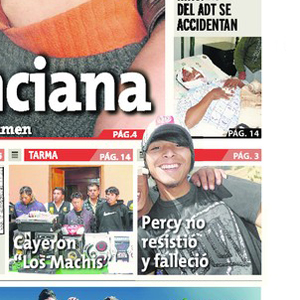
By the time Junior got to Percy, he was having a seizure on the highway. The taxi driver helped Junior lay Percy in the car and they took him to the nearest hospital. During the ride, Percy came to and complained about having a headache. What they would later learn were skull fractures would prevent Percy from raising his head. Despite the gravity of the situation, Percy’s father maintains that the doctors at the local hospital purposely delayed in attending to him (link in Spanish) because he didn’t have health insurance. Almost a day later, possibly due to the lack of medical attention, Percy had a stroke and fell into a coma until he passed away.
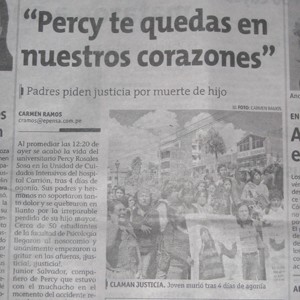
I’ve always noticed that death was more open here in the Andes, but I never thought that one of the people on the front page of the paper would be someone I knew.
Does knowing and remembering that life is short make you more or less of a risk taker? In what ways?
When I first arrived in Huancayo in 2008, I took a tour with a stellar tourist agency in the area: Adrenalina Tours. This past month, I was able to meet the director of that very agency, Katty Mosquera. In the video below, she chats with me about why tourism in Huancayo is so important and what you’ll see on the traditional tour of the Mantaro Valley:
Peru’s main attraction is the pre-Columbian Inca site, Machu Picchu, but there is so much more to experience in this country. Huancayo, where I live in the Central Andes, is rarely mentioned in tourism advertising, but that doesn’t mean it’s not worth stopping by!
These are the top four reasons you should include Huancayo on your next trip to Peru and South America:
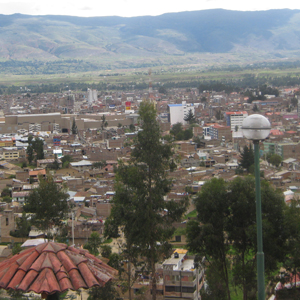
- What I appreciate most about Huancayo is the mix of old and new. The very first mall in the area opened its doors in 2009 and the main marketplace is right beside it. The city has a population of over 300,000 residents yet is surrounded by farmland. Every Sunday, you can catch the flag-raising ceremony at the main plaza and then head down to the 10-block fair in the middle of the city to meet rural vendors who come in from all the surrounding towns.
- There’s always something to celebrate in Huancayo. In fact, it’s famous for holding more fiestas than days of the year! And the people are so friendly and welcoming that you’ll find yourself invited to all of them.
- Huancayo is certainly off the beaten path, so you’ll learn more about how Peruvians in the sierra truly live without the pretense that exists in touristy areas. No one will ask you to pay for taking a picture or for asking questions, and no one will give you a more expensive English menu; yes, these things happens in Cuzco.
- Katty says that around 90% of her clients are domestic. Since there are so few foreigners and Huancaínos who can speak English, you’ll be forced to whip out your Spanish. Don’t worry! You won’t feel embarrassed because the people are warm and helpful here.
If you’re thinking of taking that 8-hour bus ride from Lima to Huancayo, check out the Huancayo Travel Guide I put together for my good friend, Tony Dunnell, the Peru Travel Guide at About.com.
What are the hidden gems in your area of the world?
Pablo* was one of the strongest breakdancers in Huancayo. At the time, no one could do all of the acrobatics and tricks that he could do on the dance floor. Everyone knew his name and respected him.
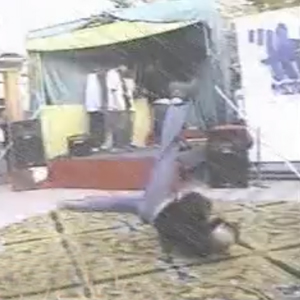
No one knew what to do with him. Some speculated that he was involved in witchcraft. When word got around the small town where he lived, the community concluded that this is what happens to people who take too many drugs. When I was introduced to Pablo in 2008, they told me to be careful around him because he was apparently a drug addict.

Pablo’s last hope was a psychiatrist in Jauja, a city two hours away, but how could they bring him there when every effort resulted in rage and a flurry of flying fists? With pained hearts, Pablo’s father and brother fought back and physically forced him into the car. It was worth it. The psychiatrist diagnosed Pablo with schizophrenia and it was a relief to the family to know that it was inevitable; the drugs were only a detonator. He’s now stable under daily medication, helping babysit his niece and even expressing an interest to go back to school.
“The experience has taught me that you should look around you before you make decisions,” Pablo’s brother tells me with slight regret that he went off to Lima on his own in his younger years. The two were inseparable, the best of friends, and Pablo was forced to find a new group when his brother left; unfortunately, Pablo got involved with the wrong crowd.
*Name changed to protect the person’s identity.
Have you ever regretted a choice you made because you thought of yourself instead of others?
What has been your experience with mental disabilities? Do they scare you? Are you curious about them? Do you feel compassion? Are they a normal part of life for you?
Copyright © 2024 Samantha Bangayan | Sitemap | Disclosure Policy | Comment & Privacy Policy
All articles and photos in this blog are licensed under the Creative Commons Attribution License CC BY-NC-ND 3.0.
